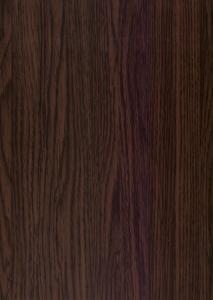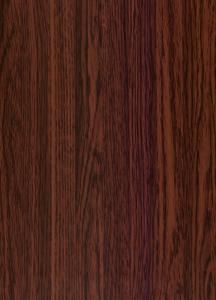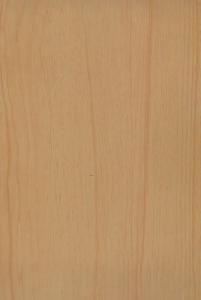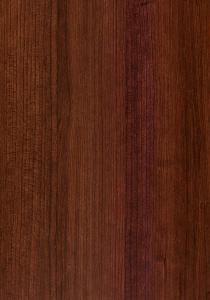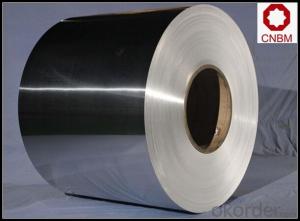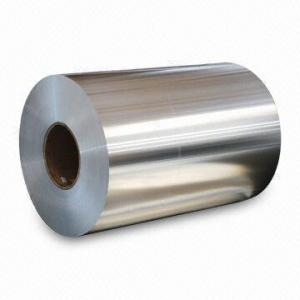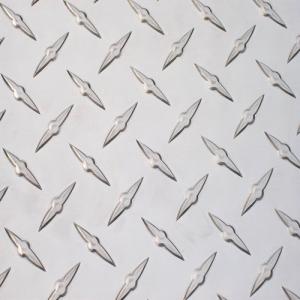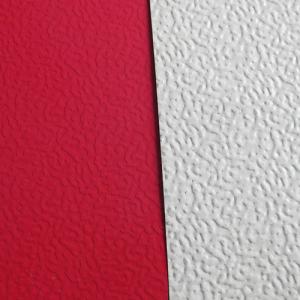Wood Grain Aluminum Coil Pipe
OKorder Service Pledge
OKorder Financial Service
You Might Also Like
Aluminium coated sheetand coil choose aluminium sheet coil as raw material, after de-ester, cleaning,passivation layer processing, and then painting on this basis, the paint areprovided by famous international companies like PPG and Valspar from UnitedStates or Becker from Sweden, represent the most advanced level in the world.After the test of exposure by natural light in Florida, the quality assurance is more than morethan 20 years. As poor performance of color coated steel corrosion, rust,yellow rust after a large amount of the deficiency of serious impact on thebuilding's overall appearance. However, because of the advantages of rawmaterials, Aluminium coated coil have a high strength, corrosion resistance,high weather resistance, can be used recycle, save energy and protect theenvironment and other characteristics. Not only have the same strength with colorcoated steel, but also overcome the shortage of color coated steel. So, the Aluminiumcoated coil has been widely used as roofing and ceiling decorative envelopesystem board in modern constructions like large factories, exhibition halls,stadiums, airports, train station hospital and so on. We can choose Aluminiumcoated coil in different thickness and color, by cutting, pressing, punching,bending and other follow-up molding process for large span, the larger theoverall roofing, wall decorative panels used in construction; or cut them intosmall panels by bending, stamping mold or other processing for indoordecorative roofing plate; we can also composite them with polyurethane foam oraluminium honeycomb for energy-saving decorative wall plates.
Alloy | 1050,1060,1100,3003,3004,3005,3104,3105,5052,5005,8011 |
Temper | O,H42,H44,H46,H48 |
Thickness (mm) | 0.25mm-1.5mm for aluminium coated coil; 1.50mm-4.0mm for aluminium coated sheet. |
Width (mm) | 100mm to 2000mm |
Length (mm) | 800mm to 6000mm for sheet |
- Q: How are aluminum coils used in the production of transportation vehicles?
- Aluminum coils play a vital role in manufacturing transportation vehicles, especially cars and planes. These coils are typically made from high-quality aluminum alloys because they are lightweight, strong, and resistant to corrosion. In the automobile industry, aluminum coils are primarily used to build vehicle bodies, including the frame, doors, hoods, and trunk lids. The lightweight nature of aluminum helps reduce fuel consumption and improve energy efficiency. This makes it a preferred choice for vehicle manufacturers who want to meet environmental regulations and improve fuel economy. Aircraft manufacturing also relies on aluminum coils to reduce weight and ensure optimal flight performance. By incorporating aluminum coils into key components like fuselages, wings, and engine parts, aircraft manufacturers can save a significant amount of weight without compromising structural integrity and durability. The use of aluminum coils in transportation vehicles also contributes to improved safety standards. Aluminum's ability to absorb crash energy makes it an ideal material for manufacturing impact-absorbing structures, such as bumpers and crash boxes in cars. This provides enhanced protection for passengers during collisions. Furthermore, aluminum coils have excellent heat dissipation properties, reducing the risk of engine and other critical system overheating. This is particularly beneficial for high-performance vehicles, where efficient cooling is essential for maintaining optimal operating conditions. In conclusion, aluminum coils are extensively used in the production of transportation vehicles due to their lightweight, strong, corrosion-resistant, and thermally conductive properties. By incorporating aluminum coils into vehicle manufacturing, the automobile and aircraft industries can achieve weight reduction, improved fuel efficiency, enhanced safety, and superior performance. This allows them to meet evolving market demands and sustainability goals.
- Q: What is the shelf life of aluminum coils?
- The shelf life of aluminum coils can vary depending on various factors such as storage conditions, protective coatings, and exposure to environmental elements. However, in general, aluminum coils can have a shelf life of several years if stored properly in a dry, cool, and non-corrosive environment.
- Q: What is the typical hardness of aluminum coils?
- The typical hardness of aluminum coils can vary depending on the specific alloy and temper used, but generally falls within the range of 40-70 on the Rockwell B scale.
- Q: How do aluminum coils contribute to the fire resistance of products?
- The fire resistance of products is enhanced by aluminum coils in multiple ways. To begin with, aluminum possesses a high melting point, enabling it to endure high temperatures without deforming or melting. This attribute is critical in thwarting the fire's propagation as it preserves the product's structural integrity, thereby restricting the fire's ability to infiltrate or weaken it. Moreover, aluminum exhibits exceptional thermal conductivity, allowing it to efficiently disperse heat. This characteristic plays a pivotal role in fire resistance since it aids in cooling the surrounding area, thereby minimizing the likelihood of ignition or combustion of nearby materials. By swiftly transferring heat away from the source, aluminum coils can impede the fire from spreading or escalating. Furthermore, aluminum is non-combustible, signifying that it does not burn or support combustion. This property assumes great importance in fire resistance as it prevents the aluminum coils from serving as fuel for the fire. Instead, aluminum acts as a barrier, impeding the flames from reaching other flammable materials and diminishing the overall fire hazard. Additionally, aluminum displays resistance to corrosion, allowing the coils to maintain their structural integrity over time, even in environments with high humidity or corrosive elements. This durability is crucial as it ensures that the fire resistance properties of products remain intact, providing enduring protection against fire hazards. In summary, the fire resistance of products is bolstered by aluminum coils due to their high melting point, excellent thermal conductivity, non-combustible nature, and resistance to corrosion. These properties collaborate to restrict the fire's spread, efficiently dissipate heat, prevent the addition of fuel to the fire, and preserve the product's structural integrity, ultimately enhancing its fire resistance capabilities.
- Q: This question asks for methods to check the quality of aluminum coils.
- <p>To inspect aluminum coils for quality, follow these steps: Visually inspect for any surface defects like scratches, dents, or discoloration. Measure the thickness and width to ensure they meet specifications. Check the hardness and tensile strength using appropriate testing equipment. Examine the coil's flatness and straightness to avoid issues in further processing. Assess the surface roughness and cleanliness, as these can affect the coil's performance. Conduct a chemical composition analysis to confirm the alloy type and purity. Perform a magnetic particle inspection or ultrasonic testing to detect any internal defects. Finally, ensure the coil meets the required mechanical properties and specifications as per industry standards.</p>
- Q: What are the common packaging options for aluminum coils?
- Aluminum coils can be packaged using various methods to ensure their safe transportation and storage. Options include wooden pallets, steel or aluminum cradles, and cardboard or plastic wrapping. These packaging solutions are specifically designed to protect the coils and maintain their quality. Wooden pallets serve as a stable base for stacking the coils, making them easy to handle. Steel or aluminum cradles are employed to secure the coils and prevent any movement or potential damage during transit. To offer an additional layer of protection against moisture and other environmental factors, the coils may also be wrapped in cardboard or plastic. The aluminum industry frequently utilizes these packaging options to safeguard the coils until they reach their final destination, preserving their integrity and quality throughout the journey.
- Q: Is it possible to use aluminum coils as a material for insulation?
- <p>Aluminum coils are not typically used for insulation materials. Aluminum is a good conductor of heat and electricity, which makes it unsuitable for insulation purposes where the goal is to prevent the flow of heat or electricity. Insulation materials are usually poor conductors of heat, such as fiberglass, mineral wool, or plastic foams, which help to retain heat within a space or prevent the loss of heat to the environment. Aluminum coils are more commonly used in applications where heat transfer is desired, such as in heat exchangers or electrical wiring.</p>
- Q: Automotive aluminum coil, using GB H22, what brand, what are the main ingredients?
- 5754-H22 aluminum sheet has the characteristics of medium strength, good corrosion resistance, weldability and easy processing. It is a typical alloy in Al-Mg (mg Al alloy) alloy.
- Q: Can aluminum coils be used in the production of aluminum composite panels?
- Yes, aluminum coils can be used in the production of aluminum composite panels. Aluminum coils are often used as the base material for manufacturing aluminum composite panels (ACP). ACPs are made by bonding a thin aluminum coil to a thermoplastic core using a bonding adhesive. The aluminum coil provides strength and stability to the panel while the thermoplastic core offers insulation and rigidity. The use of aluminum coils allows for flexibility in design and customization of the panels. Additionally, aluminum coils are durable, lightweight, and resistant to corrosion, making them an ideal choice for ACP production.
- Q: What are the different types of surface defects in aluminum coils?
- There are several different types of surface defects that can occur in aluminum coils. These defects can arise during the manufacturing process or as a result of handling and transportation. Some common types of surface defects in aluminum coils include: 1. Scratches: These are visible marks or lines on the surface of the coil caused by contact with a sharp object. Scratches can vary in depth and severity, ranging from superficial to deep grooves. 2. Pits: Pits are small, localized depressions on the surface of the coil. They can be caused by corrosion, wear and tear, or impurities in the aluminum material. 3. Streaks: Streaks are long, thin lines or bands that are visible on the surface of the coil. They can be caused by uneven coating application, improper cleaning, or contamination during the manufacturing process. 4. Dents: Dents are depressions or deformations in the surface of the coil caused by impact or pressure. They can occur during handling, stacking, or transportation of the coils. 5. Oxidation: Oxidation refers to the formation of a thin layer of aluminum oxide on the surface of the coil. This can occur naturally over time or as a result of exposure to moisture, air, or certain chemicals. 6. Corrosion: Corrosion is the gradual deterioration of the aluminum surface due to chemical reactions with the environment. It can result in discoloration, pitting, or the formation of powdery or flaky deposits on the surface of the coil. 7. Stains: Stains are visible discolorations or marks on the surface of the coil. They can be caused by various factors such as water spots, oils, lubricants, or other contaminants. It is important to note that surface defects in aluminum coils can vary in severity and impact on the performance and appearance of the final product. Manufacturers and suppliers employ various quality control measures to minimize these defects and ensure that the coils meet the required standards and specifications.
Send your message to us
Wood Grain Aluminum Coil Pipe
OKorder Service Pledge
OKorder Financial Service
Similar products
Hot products
Hot Searches
Related keywords
